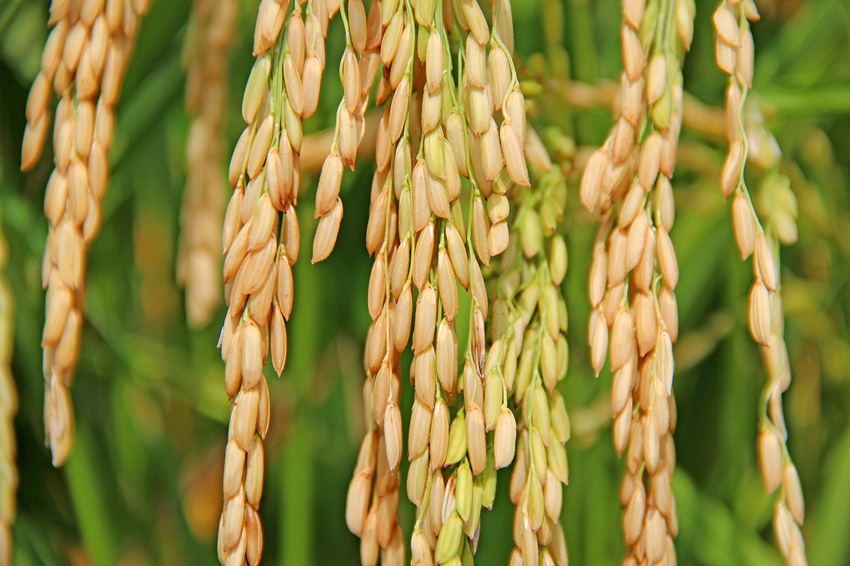March 23, 2015

In 2014, the world produced 476 million metric tons of rice while consuming 484 million metric tons, which means the world is beginning to consume more rice than producers can grow — and there has not been a serious crop disaster in any rice-producing country in several years.
Comments from Carl Brothers, senior vice president and chief operating officer for Riceland Foods, speaking at this year’s Mid-South Farm & Gin Show, may influence how much rice Mid-South farmers plant as they near their 2015 season.
Except for California and Texas, which continue to have water woes, 2014 was a good crop year for rice. The overall crop quality was good, and the U.S. had the largest harvested acreage in years.But Brothers says we need to be more competitive moving forward.
He believes the world is missing a chance to buy Mid-South medium grain, and that may be an opportunity for Mid-South farmers. “Some of the markets that buy California medium grain rice just don’t appreciate the medium grain rice that’s produced around the Mid-South,” says Brothers.
Since 1980, world exports have increased three-fold, and U.S. exports have been flat, but domestic consumption has doubled, preventing U.S. carryover growth.
World influences
After creating an unsuccessful support program that paid their farmers $10 a bushel, almost bankrupting their economy, Thailand’s prime minister has been indicted and the military has taken over. But Thailand continues to be a world leader in rice exports. Vietnam has also come on strong in the export picture, as has India.
“In 2010, India exported 2.8 million tons. In 2013-14, they became the leading exporter at 10 million tons, but are beginning to decline again because of water issues,” says Brothers.
Asian market competition is strong and it will be difficult to sell U.S. rice when U.S. prices are as separate from Asian prices.
“Asian and South American rice will battle with U.S. rice in Iraq this year, making it hard to compete head-to-head, so we have to offer better quality, service and integrity in business practices,” says Brothers.
Canada and Mexico have won two WTO cases against the U.S. involving Country of Origin Labeling (COOL) requirements for fresh beef, pork and lamb, but appeals continue, and Brothers says if something can’t be done and we lose, Canada might put a 100 percent tariff on U.S. rice in retaliation. (See COOL rule defended for final time)
“We don’t need that because Canada is a good customer, very accessible via trucks, while Asian markets must ship their rice,” he says.
Business with Cuba
American rice business with Cuba doesn’t seem to be going anywhere quickly. They recently signed a 300,000 ton milled rice agreement with Vietnam with credit terms rather than paying before title passes, as required by U.S. law. (See What will major shift in U.S. policy toward Cuba mean for agriculture?)
“We called our Cuban contacts, but they said they would call us should they wish to buy,” says Brothers.
Iraq is another frustrating country whose business the U.S. needs, but after the U.S. tendered to them, they exposed the U.S. position to the open market and then didn’t buy. They need 100,000 tons of rice a month and can’t grow that much.
“We finally got them to buy some rice from us, and then we went through a period of two tenders where we were $50 a ton cheaper than South America, and they bought South American rice. It’s been very frustrating because I don’t see Uruguay, Brazil or Argentina sending troops or money into Iraq,” Brothers says.
A free trade agreement was established a few years ago with Columbia. It included an opening for 79,000 metric tons of rice with an annual 4.5 percent growth factor to enter duty free — avoiding an 80 percent import duty with the $480 tariff being almost as much as the rice.
“Columbian growers are protected by their import tariff. Recently rice industry auctioned quota rents have gone through the roof — over $400 a ton, almost full duty in some cases,” says Brothers.
China imports 3 million to 5 million tons of rice but the U.S. doesn’t have a phytosanitary protocol agreement with China and has been working on it for at least three years with no success. “We are about ready to take it out of USDA’s hands and turn up the political heat,” says Brothers. If the U.S. could land 1 percent of the Chinese rice market, that would equal a third of the overall world rice business.
The U.S. has entered a down cycle after a good economic farming run. Brothers told producers that profit sustainability isn’t just in the profits you make, but in the losses you prevent — risk management is important.
“Please remember that historically, it’s been in your best interest to protect your rice base acres, so I would encourage you to be very careful, even if the market numbers tell you something different.”
You May Also Like




